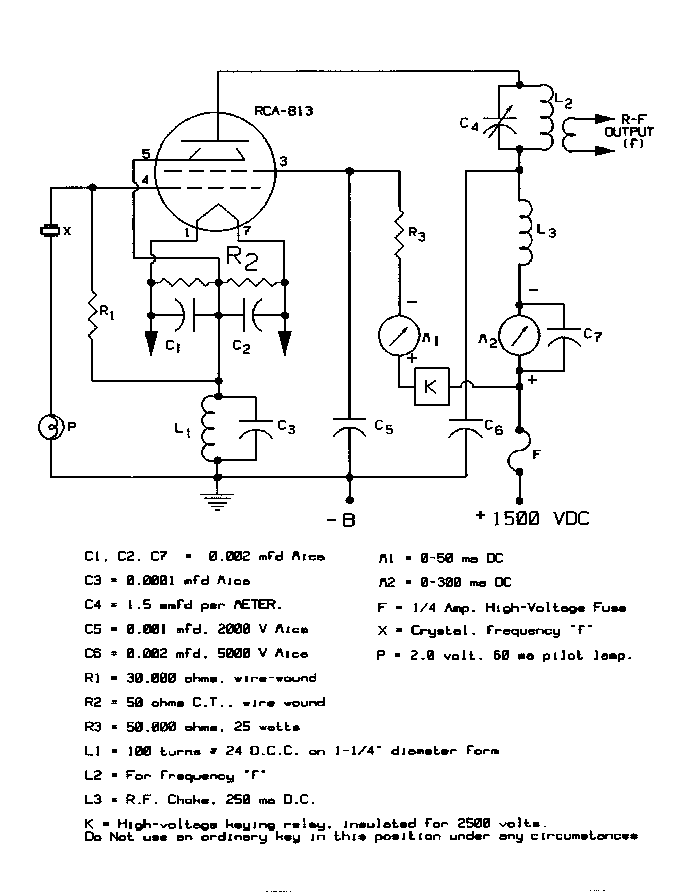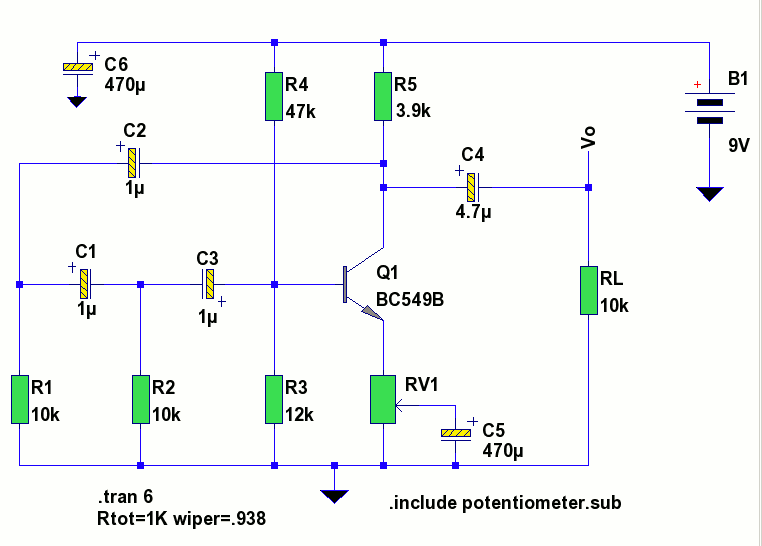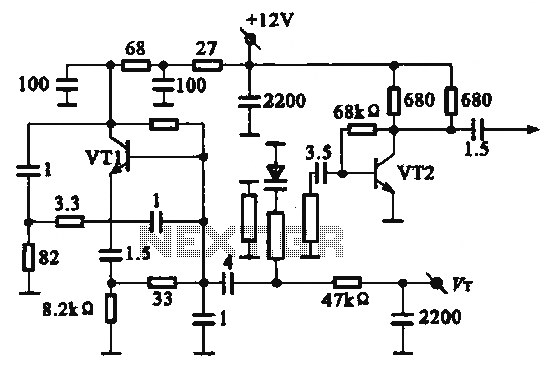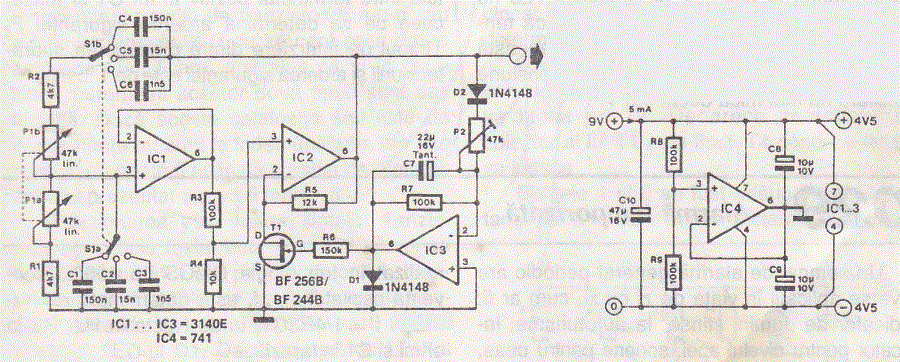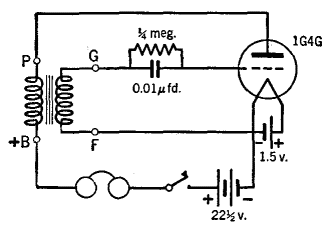
Crystal Oscillator
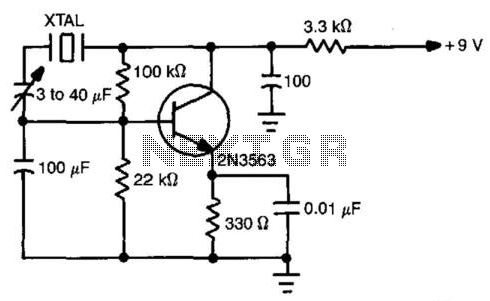
This simple circuit will oscillate with a wide range of crystals. Connect several different types of crystal holders in parallel to improve versatility. The 3 to 40 pF capacitor adjusts crystal frequency over a small range for setting to standard-frequency transmissions when the unit is used as a crystal calibrator.
The described circuit is a versatile oscillator capable of operating with various crystal types. The design allows for the connection of multiple crystal holders in parallel, which enhances the circuit's adaptability to different crystal frequencies and specifications. This feature is particularly useful in applications where different frequency outputs are required without needing to redesign the circuit.
A key component of this circuit is a variable capacitor with a capacitance range of 3 to 40 picofarads (pF). This capacitor is crucial for fine-tuning the oscillation frequency of the connected crystal. By adjusting this capacitor, the user can achieve precise frequency settings, aligning with standard frequency transmissions. This capability makes the circuit suitable for use as a crystal calibrator, ensuring that the output frequency remains stable and accurate for various applications, including radio frequency (RF) transmission and reception.
In practical applications, the circuit can be implemented on a printed circuit board (PCB) where the crystal holders are mounted in parallel. Careful consideration should be given to the layout to minimize parasitic capacitance and inductance, which can affect the performance of the oscillator. Additionally, appropriate power supply decoupling should be included to ensure stable operation.
Overall, this circuit provides a fundamental yet effective solution for frequency generation and calibration, making it an essential tool for electronic engineers and hobbyists working with RF circuits. This simple circuit will oscillate with a wide range of crystals. Connect several different types of crystal holders in parallel to improve versatility. The 3-to 40-pF capacitor adjusts crystal frequency over a small range for setting to standard-frequency transmissions when the unit is used as a crystal calibrator.
The described circuit is a versatile oscillator capable of operating with various crystal types. The design allows for the connection of multiple crystal holders in parallel, which enhances the circuit's adaptability to different crystal frequencies and specifications. This feature is particularly useful in applications where different frequency outputs are required without needing to redesign the circuit.
A key component of this circuit is a variable capacitor with a capacitance range of 3 to 40 picofarads (pF). This capacitor is crucial for fine-tuning the oscillation frequency of the connected crystal. By adjusting this capacitor, the user can achieve precise frequency settings, aligning with standard frequency transmissions. This capability makes the circuit suitable for use as a crystal calibrator, ensuring that the output frequency remains stable and accurate for various applications, including radio frequency (RF) transmission and reception.
In practical applications, the circuit can be implemented on a printed circuit board (PCB) where the crystal holders are mounted in parallel. Careful consideration should be given to the layout to minimize parasitic capacitance and inductance, which can affect the performance of the oscillator. Additionally, appropriate power supply decoupling should be included to ensure stable operation.
Overall, this circuit provides a fundamental yet effective solution for frequency generation and calibration, making it an essential tool for electronic engineers and hobbyists working with RF circuits. This simple circuit will oscillate with a wide range of crystals. Connect several different types of crystal holders in parallel to improve versatility. The 3-to 40-pF capacitor adjusts crystal frequency over a small range for setting to standard-frequency transmissions when the unit is used as a crystal calibrator.
